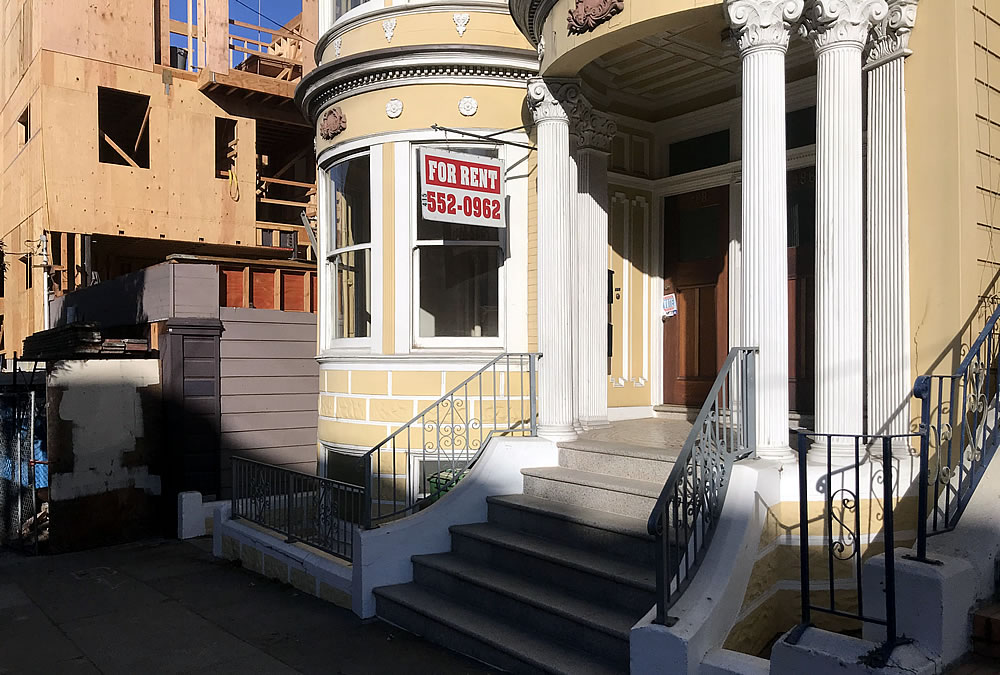As we outlined last week, leasing activity across a sample of ten (10) of the larger apartment buildings we’re tracking in San Francisco has ticked up, driving the average vacancy rate for the cross section of 3,600 units down to around 7.5 percent, driven by aggressive discounting and incentives to sign a new lease.
And while the overall number of units listed for rent in San Francisco, including units in larger buildings as well as one-off rentals, ticked up last month, listing activity has dropped around 10 percent over the past couple of weeks.
That being said, there are still 140 percent more apartments listed for rent in San Francisco than there were at the same time last year and asking rents remain down an average of 25 percent on a year-over-year basis, and 35 percent below a 2015-era peak, with the average asking rent for a studio having slipped under $1,900 a month for the first time since 2010.
Our latest analysis is based on a subset of over 100,000 listings, going back nearly two decades, that we maintain, normalize, and index on a monthly basis. And as always, we’ll keep you posted and plugged-in.

Based on SocketSite’s proprietary data, the weighted average asking rent for an apartment in San Francisco remains unchanged at around $3,100 a month since December. With SF moving next week to the red tier (and likely to orange soon after), have we seen the bottom?
Yes, we have, in my opinion.
– Both Socketsite and Zumper have recently posted data suggesting it.
– Vaccinations are ramping up, fueling optimism that things are returning to normal soon.
– Rental activity typically starts ramping up in Spring anyways.
– The holidays are over and young people living with family are ready to get out of the house.
Without knowing how the eviction moratorium is going to shakeout, I’d be wary of anyone calling the bottom of the market (or lack thereof) out just yet. A lot of people are still struggling and behind on rent, and might not be able to catch back up unless the back rent is forgiven.
Even with vaccinations and business activity on the rebound, a lot of damage has been done to those that were in the fringes before the pandemic, and I don’t believe we’ve seen the full picture of the rental market just yet.
It’s a fair point. I just don’t see how anyone will be expected to pay back past due rent. For many people, say a server at a restaurant, that money can’t easily be recouped. You’re not going to make double the money you did before due to pent up demand, allowing you to pay it back over time. Perhaps the government gets involved as a mediator? It’s just so messy. The government would never allow mass evictions either, at least here in CA.
The CA government is looking into pay off landlords a percentage of lost rents: “California Gov. Gavin Newsom and the state’s top two legislative leaders pledged Monday to pay off 80% of most people’s unpaid rent that has piled up during the coronavirus pandemic — but only if landlords agree to forgive the other 20%.”
[Editor’s Note: As we outlined last month.]
I had a vacancy in October and had no response to my ads at all, till the middle of January. Then I started getting 1 or 2 a week and finally got a tenant this week.
I had my unit open in October, but I chose to go low since I’d lose less with lower rent than with unit sitting empty on the market. In the end, between the place being vacant for a month, having to offer a month free, and agent fees, it cost me three months of rent.
The reason why my renter chose my place over others: motorized roller shades.